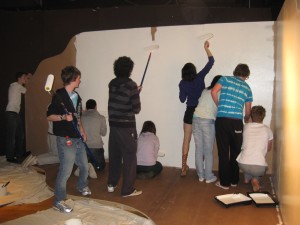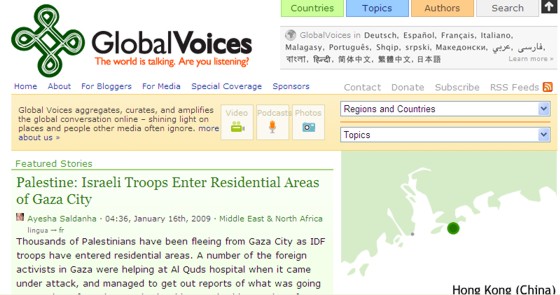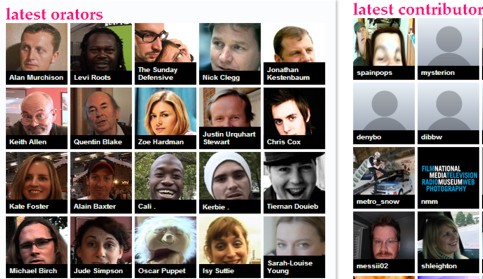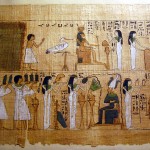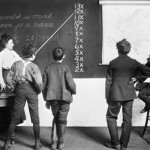I asked my son, Alexander Sheko, (also known as Sasha) to write a post about how he uses social media for his academic and personal pursuits. He is currently in his second year of Master of Urban Planning at The University of Melbourne, and at the stage where his interest in mindful and pro-active involvement in urban and environmental issues have blended his studies, personal life and work. I have recommended the use of social media to him since his later years in secondary school, so it’s interesting for me to note that his use of Twitter and Facebook have taken off at a time when they could serve a real purpose in connecting him with experts/like-minded people and enabling him to organise and promote forums and events. As a teacher librarian with an interest in social media in education, this observation has confirmed for me that students will appreciate and use social media platforms when there is a real world significance – and this is often problematic in schools where the agenda is more about practising for life rather than experiencing life. If nothing else, I hope this post will help educators reflect on possibilities for real life connections made possible for our students using social media.

Photo by Alexander Sheko
Social media – especially popular platforms such as Facebook and Twitter – are often characterised as frivolous time-wasters, manifestations of first-world banality and ennui. They are platforms on which to post cat pictures and selfies, the means of production by which we broadcast the minutiae of our lives to nobody in particular, craving likes, follows and other reassurances.
Certainly, they are often seen as counter to productivity, tools of procrastination. We might switch to another tab when a manager or (not so long ago, for me) a parent enters the room. Of course, there is more than a grain of truth in this perception. When attempting to focus on a set task or meet a deadline, it can be unhelpful to have the ping of a Facebook notification providing an excuse for distraction. And unless one is an academic in the field of communication analysing memes as “nuggets of cultural currency”, it is probably less than productive to spend hours looking at Doge, Dolan, Insanity Wolf and the such.
However, as with all tools, the utility of social media is determined by the user and the manner in which they are used. Contrary to the prejudices discussed above, tools such as Facebook and Twitter can be invaluable in finding information (and new sources thereof), sharing and discussing opinions, and making useful connections with others. Over the past year, having begun studying a postgraduate degree and exploring career opportunities, I have been able to use these tools to considerable benefit.
Finding information is perhaps the most basic way that these tools can be used. I often recommend Twitter to those reluctant to use it as a quick way to receive updates and notifications on topics of interest. For example, following a variety of news sources is a good way to get a large number of headlines and snippets of information that can be followed up (perhaps using a service such as Pocket to save articles for future reading), while following cafes and restaurants in the local area can provide updates on changes to menus or opening hours, special events, etc.
Of course, this one-way communication does not fully utilise the interactive nature of social media; however, it often does make use of social media’s networking effects. By following a particular journalist, politician, musician or writer, you are likely to see who they interact with and what information sources they use. You may also get useful recommendations from the social media platform along the lines of “people who liked X may also like Y”. This is a great way to expand your pool of information sources, providing a greater variety of perspectives.
For example, rather than only reading about sustainable transport (an interest and potential career path of mine) through local mainstream media sources such as The Age, Twitter has helped me find sources providing information and opinion from around the world, covering a more diverse range of topics and a broader set of perspectives. (For those interested, I often read The Atlantic Cities, Sustainable Cities Collective, Next City and Co.Exist, as well as blogs such as those of Mikael Colville-Andersen and Brent Toderian). Of course, whatever your interest or profession, finding and following a few key sources and active individuals will start a cascading network effect that will expose you to an increasing array of information and opinion sources.
I’ve talked mostly about Twitter so far, as I’ve found it the most useful platform for finding information in the ways I’ve discussed. Facebook can also be used for this purpose by following pages of organisations of interest (for example, I “like” the Public Transport Users Association page, which often posts articles and other updates on public transport issues in Melbourne). However, I find it is not as useful due to its more dominant use in socialising with people known in “real life” (friends and family). One aspect of Facebook that I do find quite useful, however, is group pages on particular topics that allow for sharing content and discussion.
For example, I often visit Urban Happiness, a group that was started by a professor from the faculty in which I am studying at the University of Melbourne. This is quite a successful group, with 650 members at time of writing, and frequent activity and interaction on urban-related topics, such as architecture, transport, placemaking, design, environment and policy. The group’s members include students (past and present), teaching staff and other interested people. Members are from a range of backgrounds (planning, architecture, landscape architecture, engineering) and include those employed or active in a variety of professions, sectors and locations. This diversity is incredibly useful in exposure to a broad range of information (when people post information that is relevant to their background or expertise), a variety of perspectives (when various people comment and provide their take on material posted by others) and a diverse pool of knowledge that can be accessed (for example, when posting a question to the group page).
I’ve published this despite the fact that it is only a portion of what Sasha had intended to write. When his life is less hectic, I hope to convince him to complete his post, or perhaps take part in an interview-style post.

